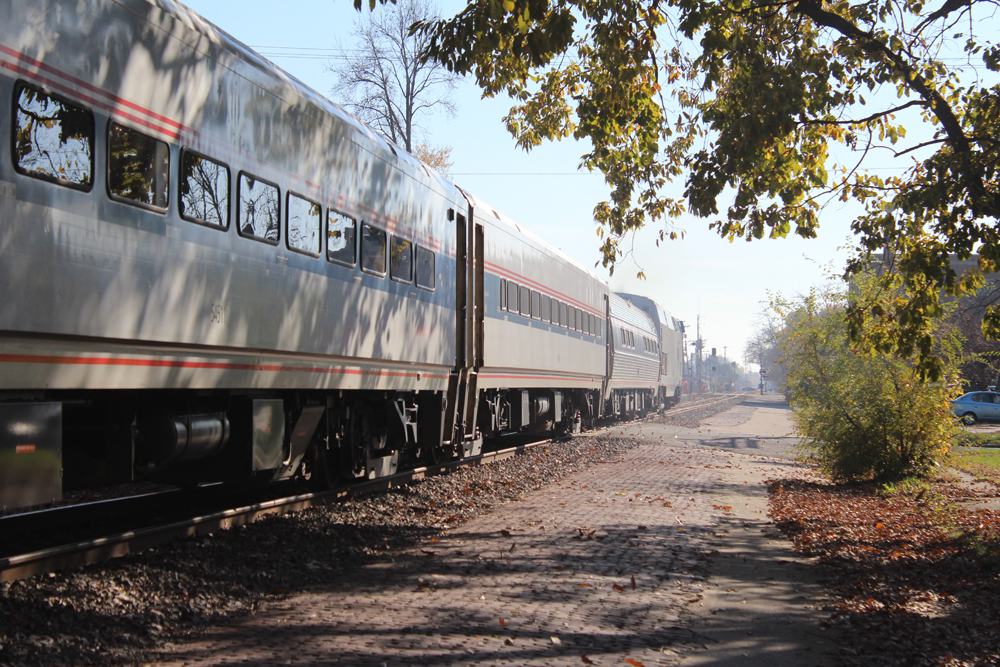So it was no surprise last week that Union Pacific CEO Lance Fritz and CSX Transportation CEO Jim Foote both faced questions about their positions on mergers among the big systems that dominate North American railroading.
Fritz, who appeared at the RailTrends 2018 conference on Friday, delivered UP’s consistent message: The regulatory risks and obstacles to a Class I merger outweigh any benefits of consolidation.
“The reason that we’re not fans of Class I consolidation isn’t because we don’t think there’s opportunity in the consolidation. There probably is some,” Fritz says, citing things such as shaving administrative costs and eliminating interchanges.
“The risk of what could happen in the approval process trumps any of that value creation,” Fritz says, due to the tougher major merger rules the Surface Transportation Board imposed in 2001.
Those rules require the merging railroads to consider downstream effects — meaning how the combination might prompt other mergers — and to prove that their merger would enhance competition, not merely preserve it.
“Our calculus says that’s overwhelming risk,” Fritz says.
Foote, who appeared at the Credit Suisse Industrials Conference on Wednesday, says he’s open-minded about Class I mergers.
Past mergers reduced costs and improved service, he notes, and you could argue that another merger would provide similar benefits.
But whether a merger would make sense hinges on whether it created value after going through the regulatory approval process.
“So I would be completely open-minded,” Foote says.
There has been speculation that UP and Norfolk Southern, which are implementing their own versions of Precision Scheduled Railroading, would seek merger partners in order to fill management ranks with people who are veterans of the late E. Hunter Harrison’s operating model. Harrison led Canadian National, CP, and CSX before his death a year ago.
Credit Suisse analyst Allison Landry asked whether mergers would be a way for other railroads to acquire PSR talent.
Foote said that would be an expensive way to go about headhunting.
Executives from both UP and NS have said that they have PSR veterans on their railroads and that they are happy with their current management teams as they introduce new operating plans based on the principles of Precision Scheduled Railroading.
But they also have said they are always seeking talent that can help their companies.
CP’s Creel has said that at some point railroads will need to merge in order to create capacity as the population expands and rail traffic grows, particularly in the congested rail hub of Chicago.















I’ve always wondered if there is scope for some kind of reciprocal deal in the midwest that would give an eastern carrier rights into Minneapolis, Omaha, Kansas City, St. Louis, Dallas, Houston and a Western road access to Detroit, Cleveland, Pittsburgh, Columbus, Cincinnati, Nashville, Atlanta. Or something along those lines.
Wow, the mental capacity of “analysts” following the railroad industry is pretty sad if they think that merging multi-billion $$ companies is a good idea if the purpose is to find experienced personnel. Geez…
You just don’t merge for cost reduction. Single line service, and new markets pairs are what you’re after.. Doesn’t matter how fluid interchange can be.. It will never trump a boxcar load of paper moving from Jackson, MS. To a food processor in Fresno, CA on one RR..One line. One rate..
You just don’t merge for cost reduction. Single line service, and new markets are what you’re after. It doesn’t matter how fluid interchange can be. It will never trump a boxcar of paper moving from Jackson, MS to a food processor in Fresno, CA. One one RR.. One line..One price..
Unlike the trucking industry and most other transportation modes, the railroads have not heard of nor apparently want transcontinental freight service under one flag. Very narrow thinking in the industry, plus think of the suits that would be out of a job.